Archives
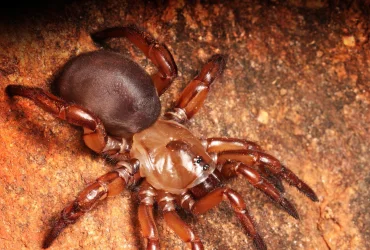 v14i1.350
v14i1.350eISSN: 1800-427X (online)
DOI:10.47605/tapro.v14i1.350
Submitted date: 27 January 2025
Accepted date: 25 April 2025
Published date: 26 May 2025
Pp. 39–47.
A NEW SPECIES OF TRAPDOOR SPIDER (ARANEAE: IDIOPIDAE: Heligmomerus) FROM THE SOUTHERN TIP OF INDIA
Akshay Khandekar*, Tejas Thackeray, Swapnil Pawar, Vivek Waghe & Satpal Gangalmale
*Corresponding author. E-mail: akshaykhandekar555@gmail.com
Abstract
A new species of the genus Heligmomerus is described based on 10 female specimens collected from the foothills of Pothaimalai, on the outskirts of the Kalakad-Mundanthurai Tiger Reserve, Tirunelveli District, Tamil Nadu, India. The new species is distinguished from all other Indian and Sri Lankan congeners in combination with several non-overlapping morphological characters. Detailed natural history of the new species, intraspecific variation in spermathecal morphology, and meristic and mensural data from the type series are given. Additionally, comments on the transfer of Idiops garoensis (Tikader, 1977) to the genus Heligmomerus by Sen et al. (2012) are provided.
Key words : Idiops garoensis, Morphology, Mygalomorphae, Peninsular India, Tamil Nadu, taxonomy
Section Editor: Danniella Sherwood
LSID:urn:lsid:zoobank.org
DOI:10.47605/tapro.v14i1.350
Submitted date: 27 January 2025
Accepted date: 25 April 2025
Published date: 26 May 2025
Pp. 39–47.
A NEW SPECIES OF TRAPDOOR SPIDER (ARANEAE: IDIOPIDAE: Heligmomerus) FROM THE SOUTHERN TIP OF INDIA
Akshay Khandekar*, Tejas Thackeray, Swapnil Pawar, Vivek Waghe & Satpal Gangalmale
*Corresponding author. E-mail: akshaykhandekar555@gmail.com
Abstract
A new species of the genus Heligmomerus is described based on 10 female specimens collected from the foothills of Pothaimalai, on the outskirts of the Kalakad-Mundanthurai Tiger Reserve, Tirunelveli District, Tamil Nadu, India. The new species is distinguished from all other Indian and Sri Lankan congeners in combination with several non-overlapping morphological characters. Detailed natural history of the new species, intraspecific variation in spermathecal morphology, and meristic and mensural data from the type series are given. Additionally, comments on the transfer of Idiops garoensis (Tikader, 1977) to the genus Heligmomerus by Sen et al. (2012) are provided.
Key words : Idiops garoensis, Morphology, Mygalomorphae, Peninsular India, Tamil Nadu, taxonomy
Section Editor: Danniella Sherwood
LSID:urn:lsid:zoobank.org
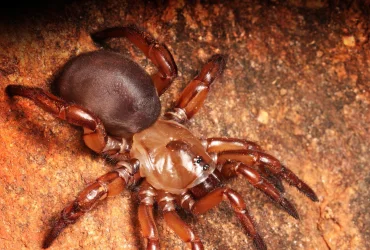 v14i1.349
v14i1.349eISSN: 1800-427X (online)
DOI:10.47605/tapro.v14i1.349
Submitted date: 10 January 2025
Accepted date: 25 March 2025
Published date: 25 April 2025
Pp. 25–38.
A NEW BLIND SKINK (REPTILIA: DIBAMIDAE: Dibamus) FROM BUTON ISLAND, INDONESIA
M. Dwi Prasetyo, D. Satria Yudha, A.A. Thasun Amarasinghe, Ivan Ineich, G.R. Gillespie & Awal Riyanto*
*Corresponding author. E-mail: awal.riyanto@gmail.com
Abstract
Blind skinks of the genus Dibamus are one of the least studied squamate taxa, only represented by a limited number of museum specimens. Here we study the taxonomy of Dibamus novaeguineae sensu lato in Indonesia by examining all the available museum specimens collected from Wallacea and mainland West Papua deposited at the Museum Zoologicum Bogorienese (MZB) and evaluate morphological and biogeographic evidence. We also include all published data on specimens that were attributed to that species. Dibamus novaeguineae is widely distributed throughout mainland Papua, Maluku, Sulawesi, and adjacent islands, the Lesser Sunda Islands, and the Philippines. We compare D. novaeguineae sensu stricto on Papua and sensu lato populations on the Lesser Sunda Islands and demonstrate that the D. cf. novaeguineae population on Buton Island represents a distinct endemic phenotype. Based on morphological and scalation differences, we here describe this isolated population on Buton, an island off the coast of southeastern Sulawesi, as a new species. We further discuss the biogeography of that new species.
Key words : Dibamus novaeguineae, Lesser Sunda, Moluccas, Morphology, Sulawesi, Taxonomy
Section Editor: Nikolay A. Poyarkov
LSID:urn:lsid:zoobank.org
DOI:10.47605/tapro.v14i1.349
Submitted date: 10 January 2025
Accepted date: 25 March 2025
Published date: 25 April 2025
Pp. 25–38.
A NEW BLIND SKINK (REPTILIA: DIBAMIDAE: Dibamus) FROM BUTON ISLAND, INDONESIA
M. Dwi Prasetyo, D. Satria Yudha, A.A. Thasun Amarasinghe, Ivan Ineich, G.R. Gillespie & Awal Riyanto*
*Corresponding author. E-mail: awal.riyanto@gmail.com
Abstract
Blind skinks of the genus Dibamus are one of the least studied squamate taxa, only represented by a limited number of museum specimens. Here we study the taxonomy of Dibamus novaeguineae sensu lato in Indonesia by examining all the available museum specimens collected from Wallacea and mainland West Papua deposited at the Museum Zoologicum Bogorienese (MZB) and evaluate morphological and biogeographic evidence. We also include all published data on specimens that were attributed to that species. Dibamus novaeguineae is widely distributed throughout mainland Papua, Maluku, Sulawesi, and adjacent islands, the Lesser Sunda Islands, and the Philippines. We compare D. novaeguineae sensu stricto on Papua and sensu lato populations on the Lesser Sunda Islands and demonstrate that the D. cf. novaeguineae population on Buton Island represents a distinct endemic phenotype. Based on morphological and scalation differences, we here describe this isolated population on Buton, an island off the coast of southeastern Sulawesi, as a new species. We further discuss the biogeography of that new species.
Key words : Dibamus novaeguineae, Lesser Sunda, Moluccas, Morphology, Sulawesi, Taxonomy
Section Editor: Nikolay A. Poyarkov
LSID:urn:lsid:zoobank.org
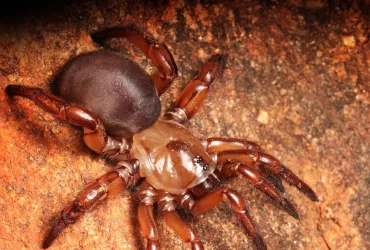 v14i1.348
v14i1.348eISSN: 1800-427X (online)
DOI:10.47605/tapro.v14i1.348
Submitted date: 27 July 2024
Accepted date: 28 March 2025
Published date: 20 April 2025
Pp. 16–24.
NEW SITE RECORDS FOR TWO DICROGLOSSID FROG SPECIES BASED ON THEIR TADPOLES FROM MANIPUR, INDIA
Yumkham S. Devi, Jayaditya Purkayastha & Saibal Sengupta*
*Corresponding author. E-mail: saibal.sengupta@dbuniversity.ac.in
Abstract
We document the occurrence of two species of the family Dicroglossidae from Kangchup Hills, Manipur, India, Fejervarya limnocharis and Minervarya sengupti. Fejervarya limnocharis is a widely distributed Asian dicroglossid frog with a complex taxonomy. This is the first time it has been reported in India, expanding its range significantly. The presence of Minervarya sengupti in Manipur also expands its distribution. We compare the morphology of their tadpoles, particularly focusing on their oral apparatus, which was examined using Scanning Electron Microscopy. We also report the results of a genetic analysis of the two species using 16S rRNA. Our findings underscore the importance of detailed morphological studies in clarifying species diversity and distribution within the family Dicroglossidae.
Key words : Fejervarya limnocharis, Minervaya sengupti, tadpole taxonomy, oral morphology
Section Editor: Daniel Escoriza
DOI:10.47605/tapro.v14i1.348
Submitted date: 27 July 2024
Accepted date: 28 March 2025
Published date: 20 April 2025
Pp. 16–24.
NEW SITE RECORDS FOR TWO DICROGLOSSID FROG SPECIES BASED ON THEIR TADPOLES FROM MANIPUR, INDIA
Yumkham S. Devi, Jayaditya Purkayastha & Saibal Sengupta*
*Corresponding author. E-mail: saibal.sengupta@dbuniversity.ac.in
Abstract
We document the occurrence of two species of the family Dicroglossidae from Kangchup Hills, Manipur, India, Fejervarya limnocharis and Minervarya sengupti. Fejervarya limnocharis is a widely distributed Asian dicroglossid frog with a complex taxonomy. This is the first time it has been reported in India, expanding its range significantly. The presence of Minervarya sengupti in Manipur also expands its distribution. We compare the morphology of their tadpoles, particularly focusing on their oral apparatus, which was examined using Scanning Electron Microscopy. We also report the results of a genetic analysis of the two species using 16S rRNA. Our findings underscore the importance of detailed morphological studies in clarifying species diversity and distribution within the family Dicroglossidae.
Key words : Fejervarya limnocharis, Minervaya sengupti, tadpole taxonomy, oral morphology
Section Editor: Daniel Escoriza
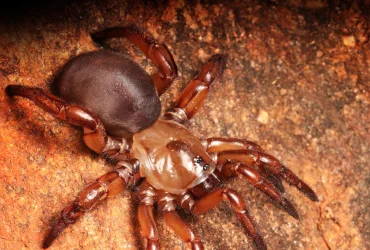 v14i1.347
v14i1.347eISSN: 1800-427X (online)
DOI:10.47605/tapro.v14i1.347
Submitted date: 28 November 2024
Accepted date: 16 January 2025
Published date: 28 January 2025
Pp. 1–15, pls. 1–2.
A NEW SPECIES OF KARST-ASSOCIATED PITVIPER OF THE Trimeresurus kanburiensis COMPLEX (SQUAMATA: VIPERIDAE) FROM EASTERN THAILAND
Parinya Pawangkhanant, Sabira S. Idiiatullina, Ton Smits, Ian Dugdale, Andrew Pierce, Chatmongkon Suwannapoom & Nikolay A. Poyarkov*
*Corresponding author. E-mail: n.poyarkov@gmail.com
Abstract
We describe a new species of karst-dwelling pitviper from Sa Kaeo Province in eastern Thailand based on morphological and molecular (2,296 bp from cyt b, ND4, and 16S rRNA mitochondrial DNA genes) lines of evidence. Our phylogenetic analysis places the new species as a sister lineage of Trimeresurus venustus (p = 2.7% and 3.7% for cyt b and ND4 genes, respectively). It is also closely related to T. cardamomensis (p = 2.1% and 2.6% for cyt b and ND4 genes, respectively). To date, the new species is known from only two adult specimens, and its distribution seems to be restricted to a narrow limestone karst area in the province of Sa Kaeo in Thailand near the national border with Cambodia. Additional studies are required to understand its life history, distribution, and conservation status. The discovery of this new species brings the total number of known Trimeresurus to 51 species, 19 of which occur in Thailand, including five that are endemic to this country.
Key words : limestone, morphology, molecular phylogeny, systematics, Sa Kaeo Province
Section Editor: Patrick David
LSID:urn:lsid:zoobank.org
DOI:10.47605/tapro.v14i1.347
Submitted date: 28 November 2024
Accepted date: 16 January 2025
Published date: 28 January 2025
Pp. 1–15, pls. 1–2.
A NEW SPECIES OF KARST-ASSOCIATED PITVIPER OF THE Trimeresurus kanburiensis COMPLEX (SQUAMATA: VIPERIDAE) FROM EASTERN THAILAND
Parinya Pawangkhanant, Sabira S. Idiiatullina, Ton Smits, Ian Dugdale, Andrew Pierce, Chatmongkon Suwannapoom & Nikolay A. Poyarkov*
*Corresponding author. E-mail: n.poyarkov@gmail.com
Abstract
We describe a new species of karst-dwelling pitviper from Sa Kaeo Province in eastern Thailand based on morphological and molecular (2,296 bp from cyt b, ND4, and 16S rRNA mitochondrial DNA genes) lines of evidence. Our phylogenetic analysis places the new species as a sister lineage of Trimeresurus venustus (p = 2.7% and 3.7% for cyt b and ND4 genes, respectively). It is also closely related to T. cardamomensis (p = 2.1% and 2.6% for cyt b and ND4 genes, respectively). To date, the new species is known from only two adult specimens, and its distribution seems to be restricted to a narrow limestone karst area in the province of Sa Kaeo in Thailand near the national border with Cambodia. Additional studies are required to understand its life history, distribution, and conservation status. The discovery of this new species brings the total number of known Trimeresurus to 51 species, 19 of which occur in Thailand, including five that are endemic to this country.
Key words : limestone, morphology, molecular phylogeny, systematics, Sa Kaeo Province
Section Editor: Patrick David
LSID:urn:lsid:zoobank.org
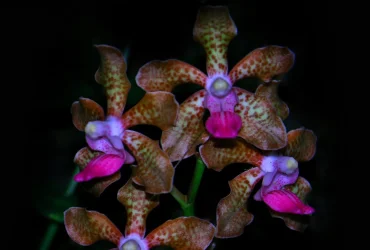 v13i2.346
v13i2.346ISSN: 1800-427X (printed)
eISSN: 1800-427X (online)
DOI:10.47605/tapro.v13i2.346
Submitted date: 4 June 2024
Accepted date: 28 October 2024
Published date: 19 December 2024
Pp. 148–149, pl. 33.
On the occurrence of Ipomoea imperati (Convolvulaceae) on mainland India
A. Balkrishna, B. Joshi*, A. Srivastava, V.P. Arya, R.K. Mishra, A. Kumar, A. Kushwaha & R. Kumar
*Corresponding author. E-mail: bhaskar.joshi@patanjali.res.in
Surveys and exploration of the Ganga River catchment areas were undertaken from Gomukh (Uttarakhand) to Gangasagar (West Bengal) under the National Mission for Clean Ganga project of the Ministry of Jal Shakti (Department of Water Resources, River Development and Ganga Rejuvenation), New Delhi. Surveys were conducted in the pre-monsoon and post-monsoon seasons in 2023. During the floristic survey in October 2023, unknown specimens of the Convolvulaceae family were collected from Uttar Pradesh: Varanasi Ghat (Varanasi District) and Dafi (Balia District) and Bihar State: Doriganj (Saran District) and Barh (Patna District), India. Further study of the vegetative and flowering parts of the specimens, and scrutiny of the literature revealed that they were specimens of Ipomoea imperati (Vahl). This is a littoral pantropic species previously reported from Andaman & Nicobar Islands. The herbarium specimens were deposited in the Patanjali Research Foundation (PRFH), Haridwar, Uttarakhand, India. Brief descriptions of its taxonomy, phenology, distribution, and habitat are provided.
Section Editor: Arunrat Chaveerach
eISSN: 1800-427X (online)
DOI:10.47605/tapro.v13i2.346
Submitted date: 4 June 2024
Accepted date: 28 October 2024
Published date: 19 December 2024
Pp. 148–149, pl. 33.
On the occurrence of Ipomoea imperati (Convolvulaceae) on mainland India
A. Balkrishna, B. Joshi*, A. Srivastava, V.P. Arya, R.K. Mishra, A. Kumar, A. Kushwaha & R. Kumar
*Corresponding author. E-mail: bhaskar.joshi@patanjali.res.in
Surveys and exploration of the Ganga River catchment areas were undertaken from Gomukh (Uttarakhand) to Gangasagar (West Bengal) under the National Mission for Clean Ganga project of the Ministry of Jal Shakti (Department of Water Resources, River Development and Ganga Rejuvenation), New Delhi. Surveys were conducted in the pre-monsoon and post-monsoon seasons in 2023. During the floristic survey in October 2023, unknown specimens of the Convolvulaceae family were collected from Uttar Pradesh: Varanasi Ghat (Varanasi District) and Dafi (Balia District) and Bihar State: Doriganj (Saran District) and Barh (Patna District), India. Further study of the vegetative and flowering parts of the specimens, and scrutiny of the literature revealed that they were specimens of Ipomoea imperati (Vahl). This is a littoral pantropic species previously reported from Andaman & Nicobar Islands. The herbarium specimens were deposited in the Patanjali Research Foundation (PRFH), Haridwar, Uttarakhand, India. Brief descriptions of its taxonomy, phenology, distribution, and habitat are provided.
Section Editor: Arunrat Chaveerach
Hubungi Kami
The ultimate aim of the journal is to provide an effective medium for communication of the latest and best scientific information.
Copyright © 2020 Taprobanica. All Rights Reserved
Jasa Pembuatan Website by IKT




